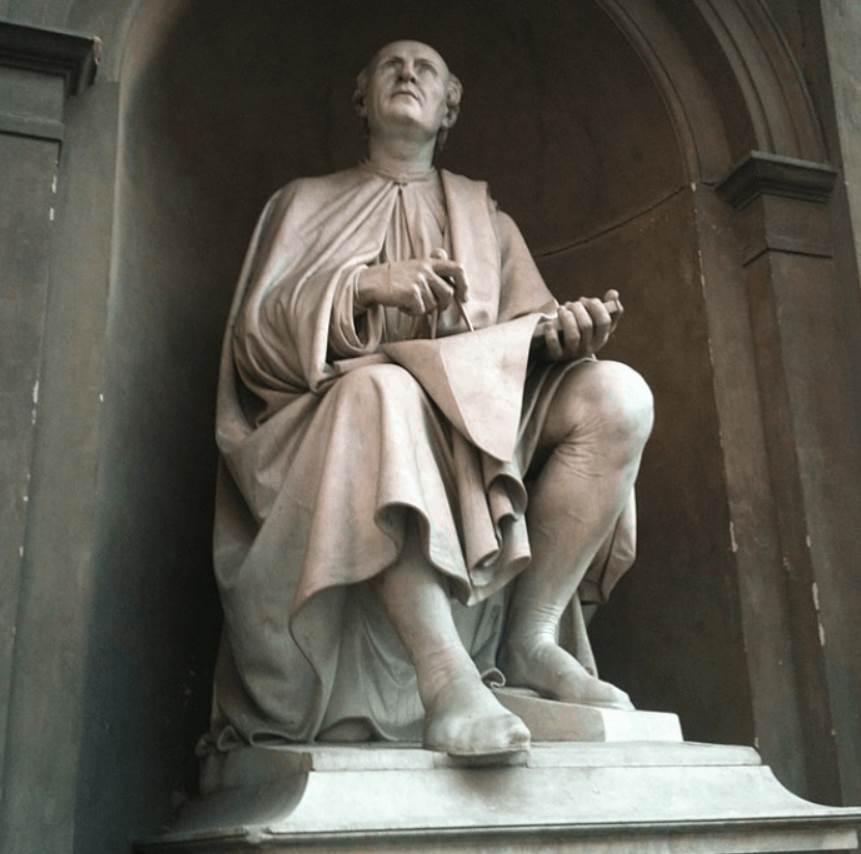It’s one of the most magnificent churches ever constructed, has one of the most amazing domes in the world, and stands majestically in a city that breathes history.
In this post, you’ll discover the ultimate list of Florence Cathedral facts, a fabulous landmark in Florence with an immensely rich history of art and architecture.
1. It’s located in the historic center of Florence
The Florence Cathedral, officially known as “Cattedrale di Santa Maria del Fiore” (Cathedral of Saint Mary of the Flower), is one of the most prominent landmarks in the city of Florence the capital city of the Tuscany region in Italy. The city has been of major importance for art and architecture and was one of the biggest cities in medieval Europe.
It’s the birthplace of the “Renaissance” and has produced numerous famous Renaissance artists, many of who have a direct stake in the construction of the city’s cathedral.
Florence has often been referred to as the “Athens of the Middle Ages,” and when using this metaphor, we can refer to its cathedral as its Parthenon.
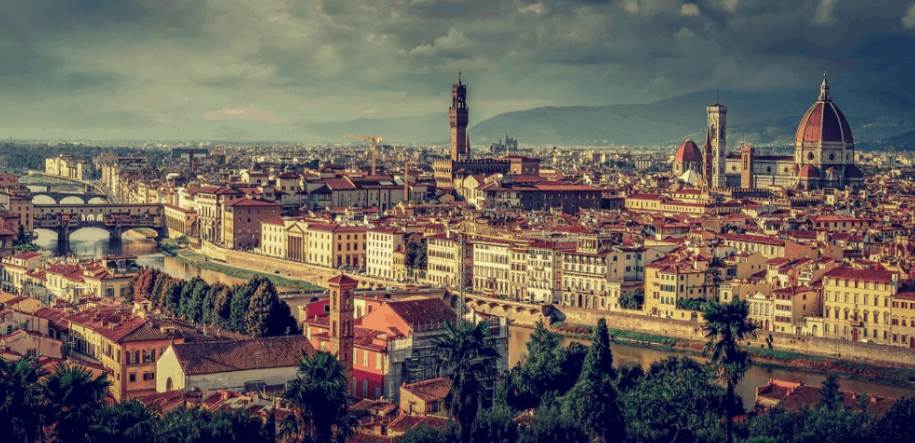
2. It’s part of a complex with 2 more famous buildings
The entire historic center of the city of Florence has been inscribed as a UNESCO World Heritage Site since 1982. The cathedral is included in this as well as 2 other buildings that are part of the cathedral complex.
The other two structures are the Florence Baptistery of Saint John, and the cathedral’s Campanile, a free-standing tower right next to the church.
With a length of 153 meters (502 feet) and a maximum width of 90 meters (300 feet) (the nave width is 38 meters / 125 feet), it’s one of the largest churches in Italy and one of the most popular tourist attractions in Tuscany!
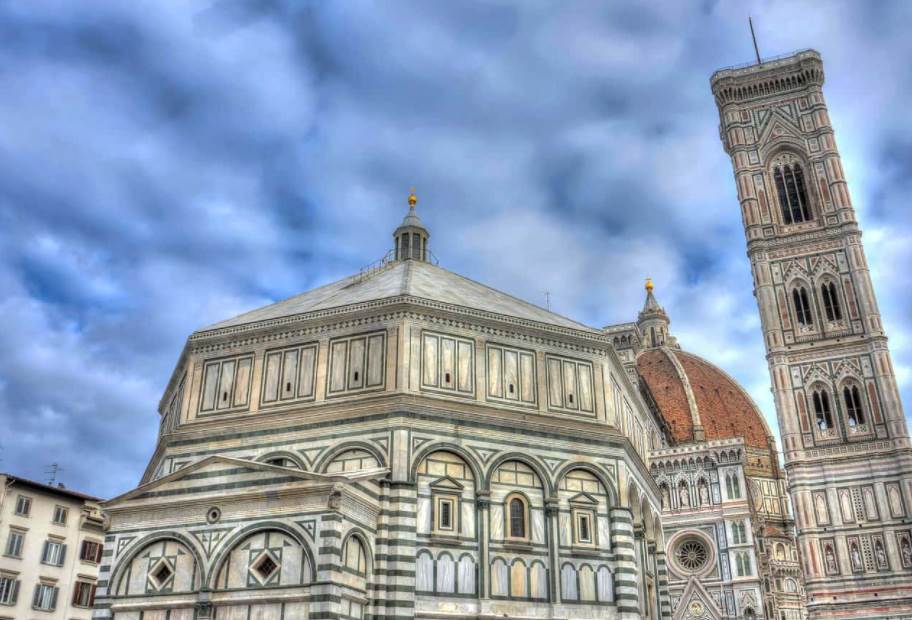
3. There used to be an ancient church on its location
The current version of Florence Cathedral isn’t the first church that was ever built in this location. It’s believed that an ancient church dedicated to Saint Reparata, a 3rd century Martyr in Palestine, was consecrated here in the early 5th century.
And believe it or not, this wasn’t even the first church in Florence! The first church was the Basilica di San Lorenzo di Firenze which was consecrated in the year 393 A.D.
Both of these churches have been completely rebuilt during the Renaissance.
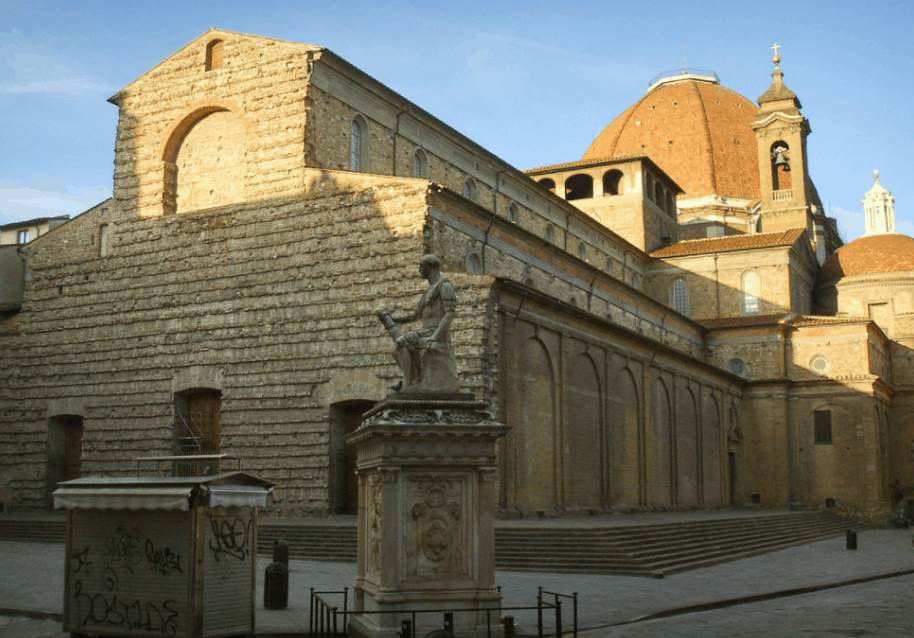
4. The cathedral’s architect worked on another famous structure in Florence as well
The 5th-century church was crumbling during the Middle Ages. Because other cities such as Pisa and Siena were already rebuilding their cathedrals, it was decided in Florence to do the same
In 1294, the commission for the new design of the Florence Cathedral was given to Arnolfo di Cambio, an Italian sculptor, and architect who would go on to complete the design of the “Palazzo Vecchio,” the city’s town hall, as well in 1298.
He is the one who made the design of 3 wide naves which end beneath an octagonal dome.
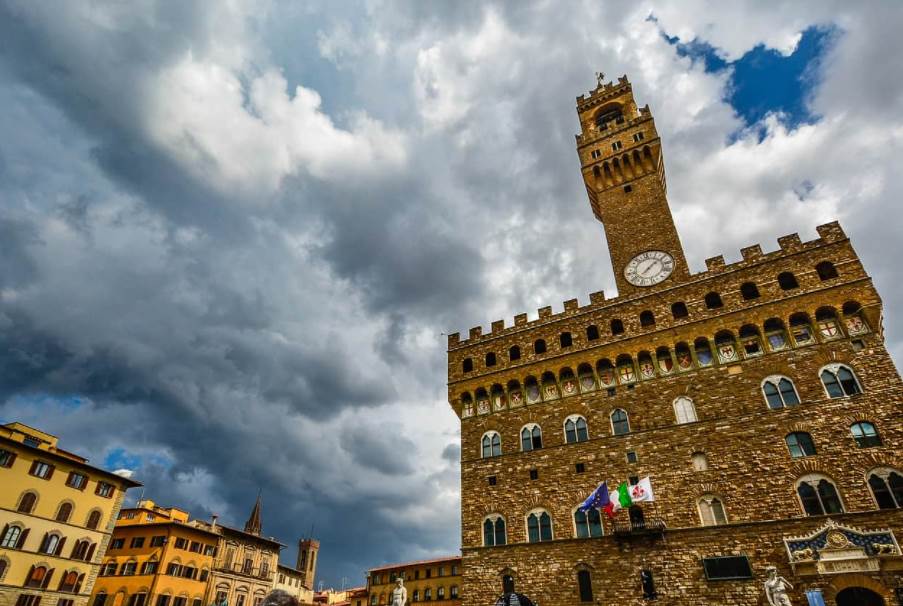
5. Construction of Florence Cathedral started in the late 13th-century
Shortly after Arnolfo di Cambio completed his design, the construction of the cathedral commenced. The groundbreaking happened on September 9, 1296, an event witnessed by Cardinal Valeriana, the first time a representative of the Pope came to Florence.
Unfortunately, di Cambio died in the year 1302, and work stalled after this and wouldn’t recommence until some relics of Saint Zenobius (337-417), the first Bishop of Florence who is also buried in the cathedral, was discovered in the year 1330.
It was then that another architect was appointed by the Arte della Lana, the powerful wool guild of Florence, named Giotto, who designed the cathedral’s campanile.
6. Construction was halted due to a serious plague
One of the worst pandemics in human history happened just after the construction of the cathedral was recommenced. In the year 1348, the “Black Death” raged through Europe and killed between 30 and 60% of the population.
A lot of the cathedral was finished in the second half of the 14th century, including the Campanile, an enlarged version of the apse, and the side chapels of the cathedral.
7. Two arch-rivals were competing to get the commission for the dome in 1418
One of the most interesting Florence Cathedral facts is that an architectural competition was held in the early 15th century which became the culmination of the rivalry between two famous artists and master goldsmiths.
It all started when Lorenzo Ghiberti was awarded a commission of two bronze doors in the cathedral’s baptistery in 1401, doors that would later be referred to as the “Gates Of Paradise” by Michelangelo.
Filippo Brunelleschi got his revenge nearly 2 decades later when his design for the cathedral’s dome was chosen as the winner of the competition over Ghiberti’s.
Ghiberti, however, managed to get an equal salary, resulting in Brunelleschi taking it a step further. It’s assumed that he feigned illness so the work would be continued by his rival. He was aware that the construction of the dome, which was unique at the time, would be way over his head.
Ghiberti had no other option than to admit that he wasn’t able to complete the dome, and Brunelleschi didn’t just get his ultimate revenge, he was able to humiliate his rival in the process as well!

8. The cathedral was consecrated shortly after the dome was completed
After being under construction for about 140 years, the Florence Cathedral was finally completed. The dome had been built in 1420 and was finally completed in the year 1436.
The cathedral was consecrated by Pope Eugene IV on 25 March 1436, which was the first day of the year according to the Florentine calendar.
9. The dome still holds an impressive record until today
After a construction period of well over a century, the construction of the dome still wasn’t started. The overall design had been completed in 1296 by Arnolfo di Cambio, but the eventual design would be something way more impressive.
One of the most remarkable Florence Cathedral facts is that Brunelleschi’s dome wasn’t just the largest dome in the world for a very long period, but that it remains the largest brick dome to be ever built in history!
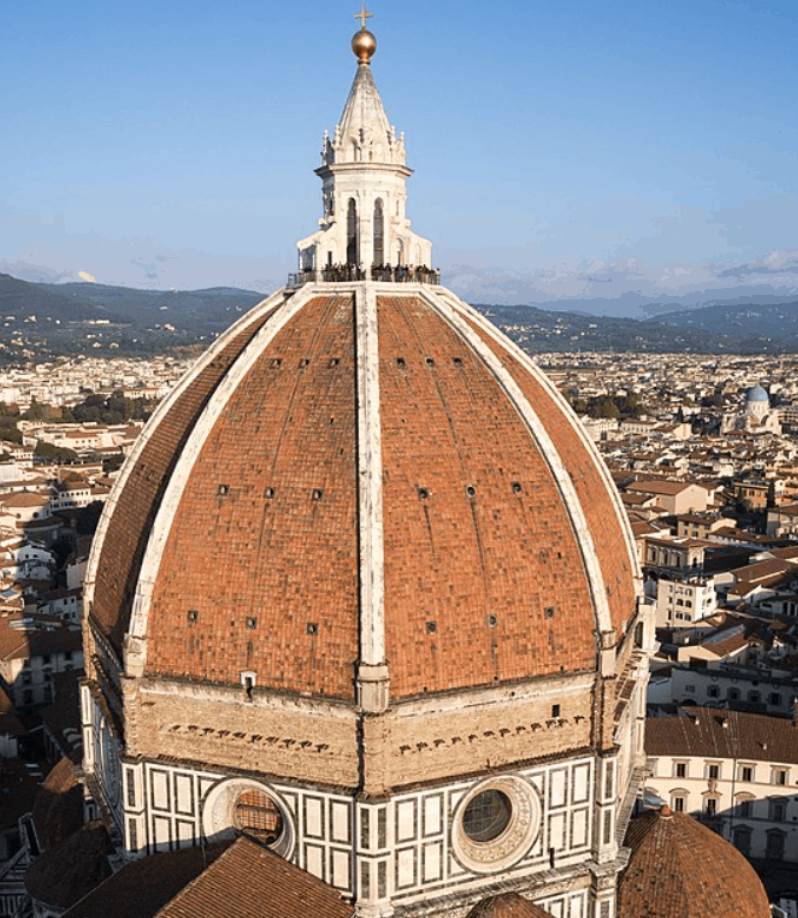
10. The dome’s design was a major event in architectural history
To ensure the dome would sustain its weight, he studied the dome of the Pantheon in Rome extensively, together with Donatello, the famous sculptor.
Brunelleschi decided not to use the Medieval Gothic style which included buttresses to support the dome, but return to the ancient method of constructing a dome, but had to be creative to make it work.
That’s why he integrated 4 horizontal stone and iron chains in the interior of the octagonal dome to ensure it wouldn’t collapse under its weight.
The construction of this dome turned out to become one of the first major projects in Renaissance architecture.
11. A copper ball on top of the dome was created by Leonardo da Vinci’s teacher
The top of the dome is decorated with a copula, of which the design was again chosen through a competition. And history repeated itself because Brunelleschi won the competition again and not Ghiberti!
This lantern was completed in the year 1461 by a friend of Brunelleschi named Michelozi, another pioneer in Renaissance architecture best known for his design of the “Palazzo Medici” in Florence.
The final decoration was a copper ball and cross which contained holy relics and which was put on top of this copula. The commission of this gilt copper ball was awarded to Andrea del Verrocchio in 1469 and it brought the height of the cathedral to 114.5 meters (376 feet).
Verrocchio was the master of Leonardo da Vinci and owned a famous workshop for artists in the city.
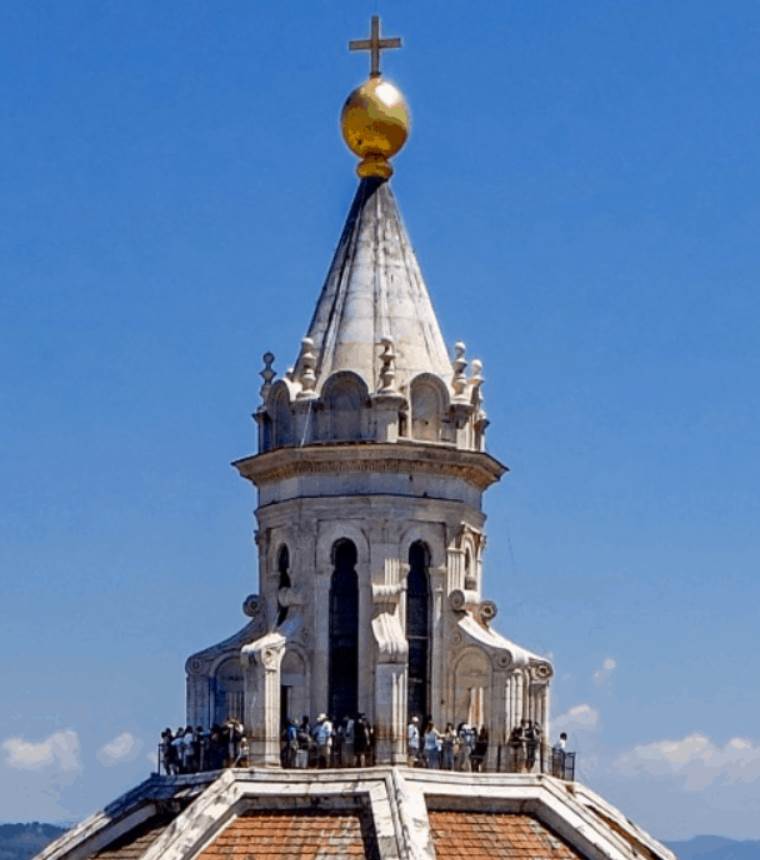
12. It took over 5 centuries to complete the exterior decorations
While the building was completed in the 15th century, the exterior decorations would take much longer. The final decorations of the façade were completed in the late 19th century and 3 large bronze doors were integrated into it between 1899 and 1901.
This means that work on the cathedral continued for over 5 and a half centuries after the main structure was completed!
13. Donatello’s David was supposed to be placed on top of the cathedral
Donatello was still in his early twenties when he received the commission to sculpt a statue of David for the Florence Cathedral. This sculpture was supposed to decorate the buttresses of the cathedral along with 12 other sculptures related to the Old Testament.
It never made it to the top of the cathedral, and even though a statue of Isaiah by Nanni di Banco was once lifted to the top, it was deemed too small to stay there and was brought back down.
14. Michelangelo’s David suffered the same faith nearly a century later
One of the most famous statues in the world, The Statue of David by Michelangelo, was also commissioned to decorate the roof of the Florence Cathedral.
The problem with this statue wasn’t that it is too small, the problem was that it was way too big! Unable to lift the 6-tonne statue to the top, they had to abandon the idea and place it somewhere else in Florence.

15. A replica of David was placed on its intended location for 1 day in 2010
David was once placed where it was intended, albeit a fiberglass replica. Back in 2010, this replica decorated the cathedral where the real statue was originally planned.
Would have been an amazing sight, right?
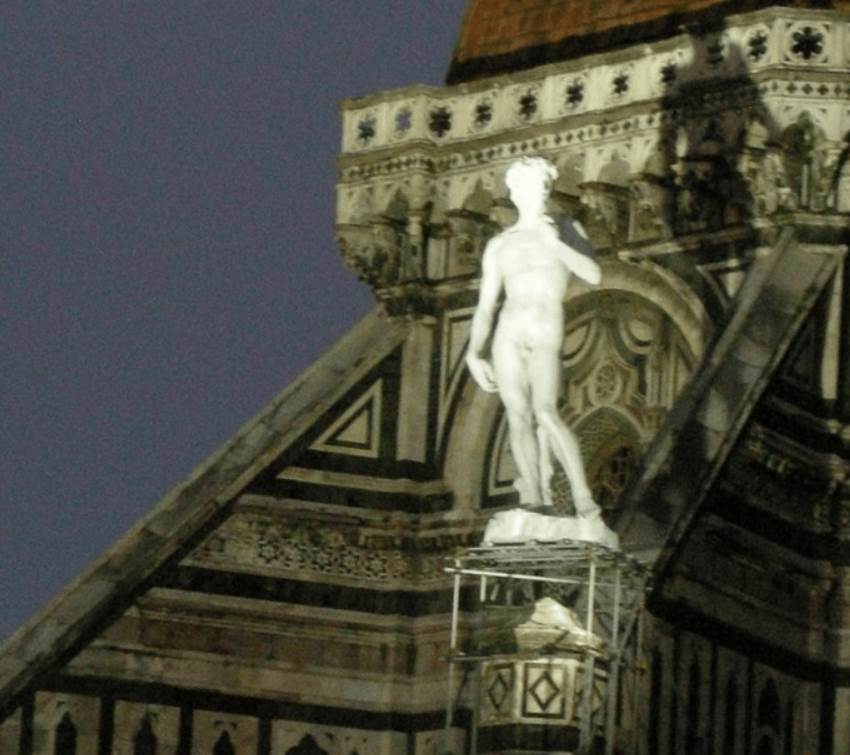
16. A colossal statue of Saint John the Evangelist once decorated the cathedral’s façade
One of the most fascinating Florence Cathedral facts is that a statue created by Donatello was placed on top of the cathedral for an extended period.
The seated sculpture of Saint John the Evangelist was completed in 1411 and decorated the main façade of the cathedral until 1588. This was long before the façade received its amazing “upgrade” as the old façade looked rather dull in comparison.
17. The magnificent façade of the cathedral was designed in the late 19th century
The final touches of the cathedral were made between 1876 and 1887 when the old façade was completely decorated with white, green, and red marble.
As you might have expected, the design was chosen through an architectural competition and the winner was Italian architect Emilio De Fabris, who didn’t live to see his work completed as he died in the year 1883.
The result is an elaborately decorated neo-gothic façade that can be considered one of the most magnificent façades of a cathedral in the world!
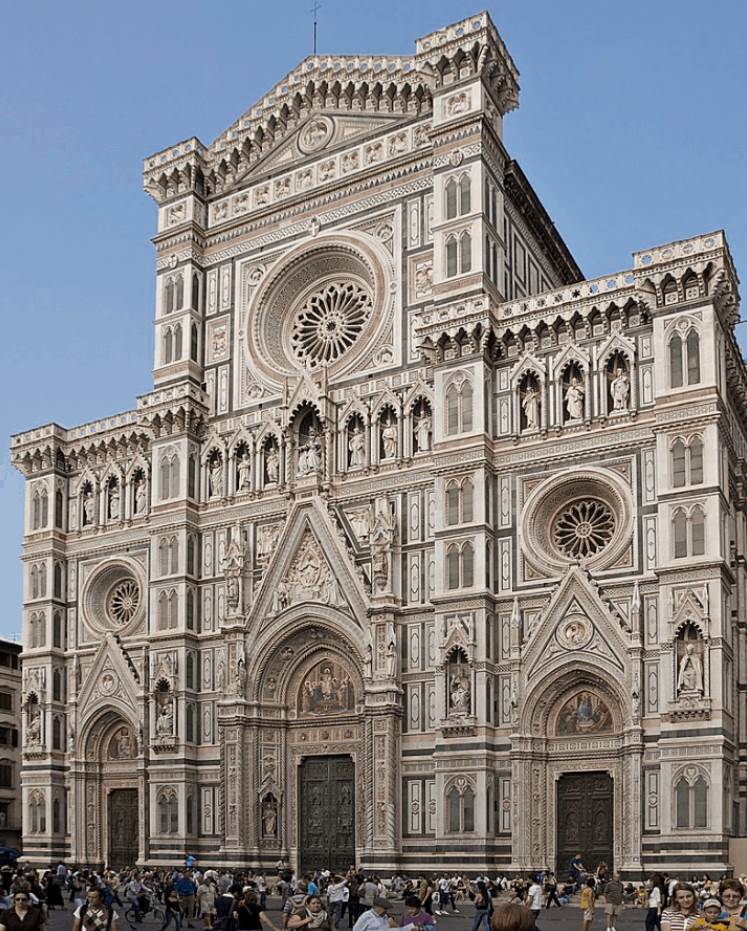
18. The interior of the cathedral is much less impressive
One of the most remarkable Florence Cathedral facts is that while the exterior of the cathedral is abundantly decorated, the interior is much less spectacular. The huge cathedral’s interior with its Gothic design looks rather empty at first sight.
One reason for this is that most of the decorations have been lost or moved to other locations, including Florence’s famous “Museum Opera del Duomo.”
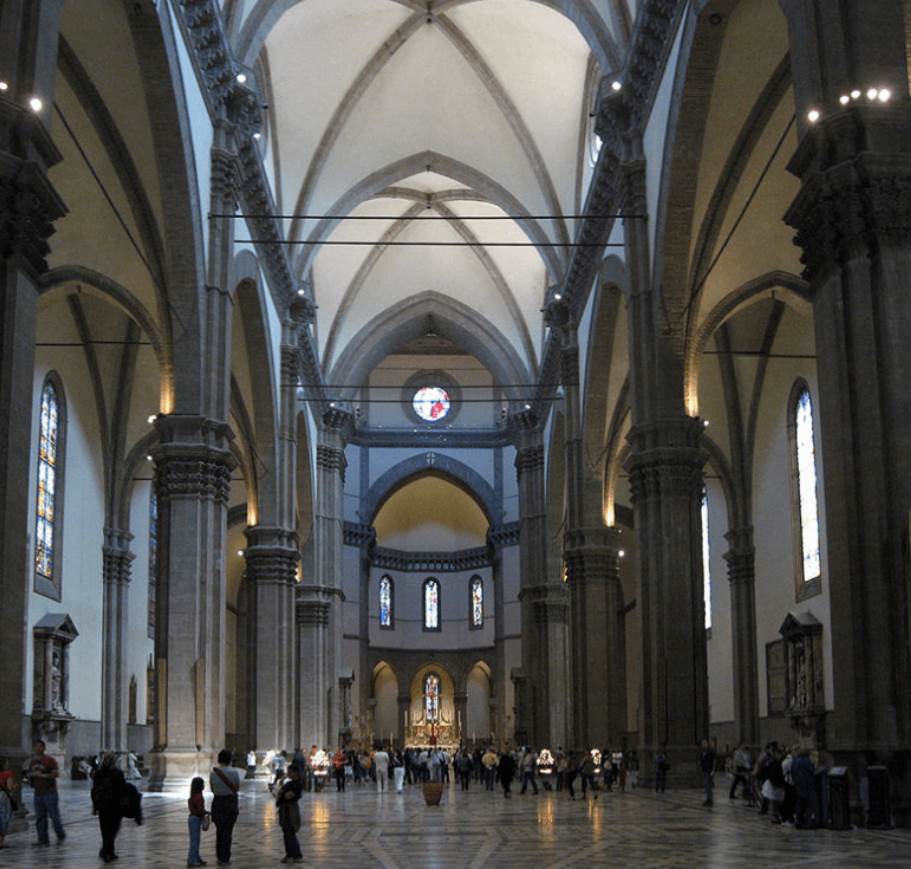
19. An enormous fresco was painted on the interior of the cathedral’s dome
One of the most fascinating features of the cathedral’s interior is an enormous fresco painted by Giorgio Vasari and Federico Zuccari on the inside of the dome.
The fresco is another representation of Michelangelo’s Last Judgement and covers an area of 3,600 square meters (38 750 square feet).
It took both men over a decade to complete the painting between 1568 and 1579, a spectacular achievement!
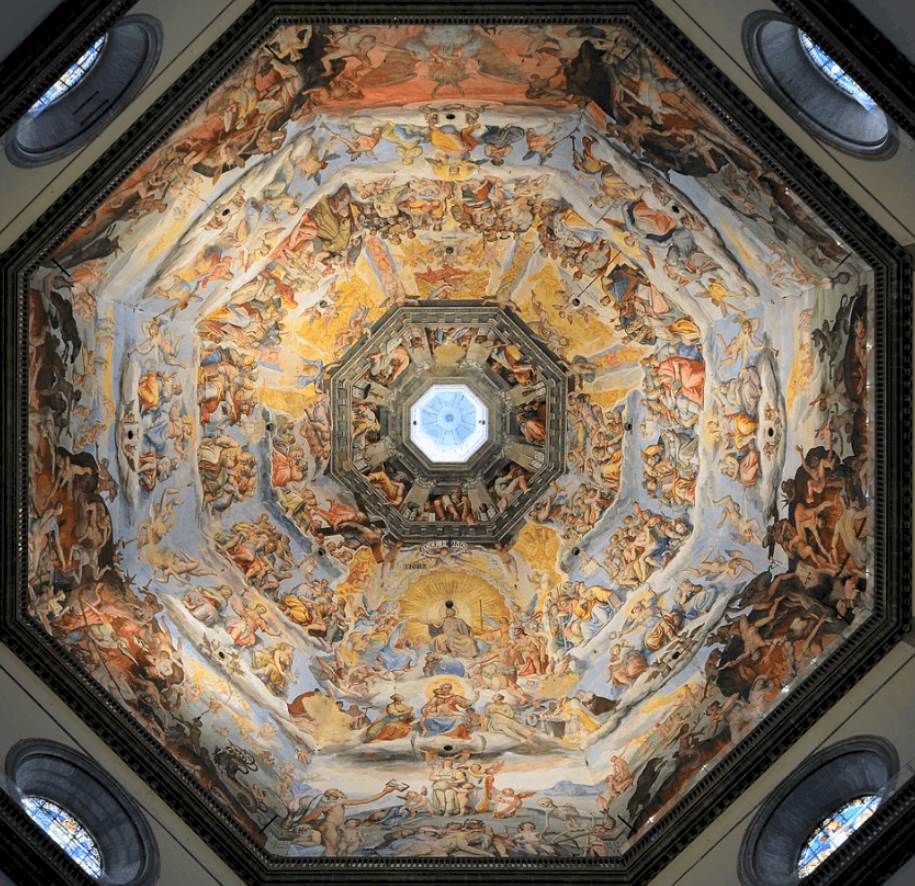
20. The cathedral’s main architect is forever looking up to his most famous achievement
The man with the biggest stake in the cathedral’s construction is without a doubt, Filippo Brunelleschi. He won several commissions, including the massive expansion of the cathedral and amazing dome.
One of the most fantastic Florence Cathedral facts is that the man who made it all happen is forever admiring his work.
A statue of him just outside the Palazzo dei Canonici in the Piazza del Duomo near the cathedral as he looks up towards the cathedral’s dome in amazement as to what he has achieved.
And what an achievement it was!
